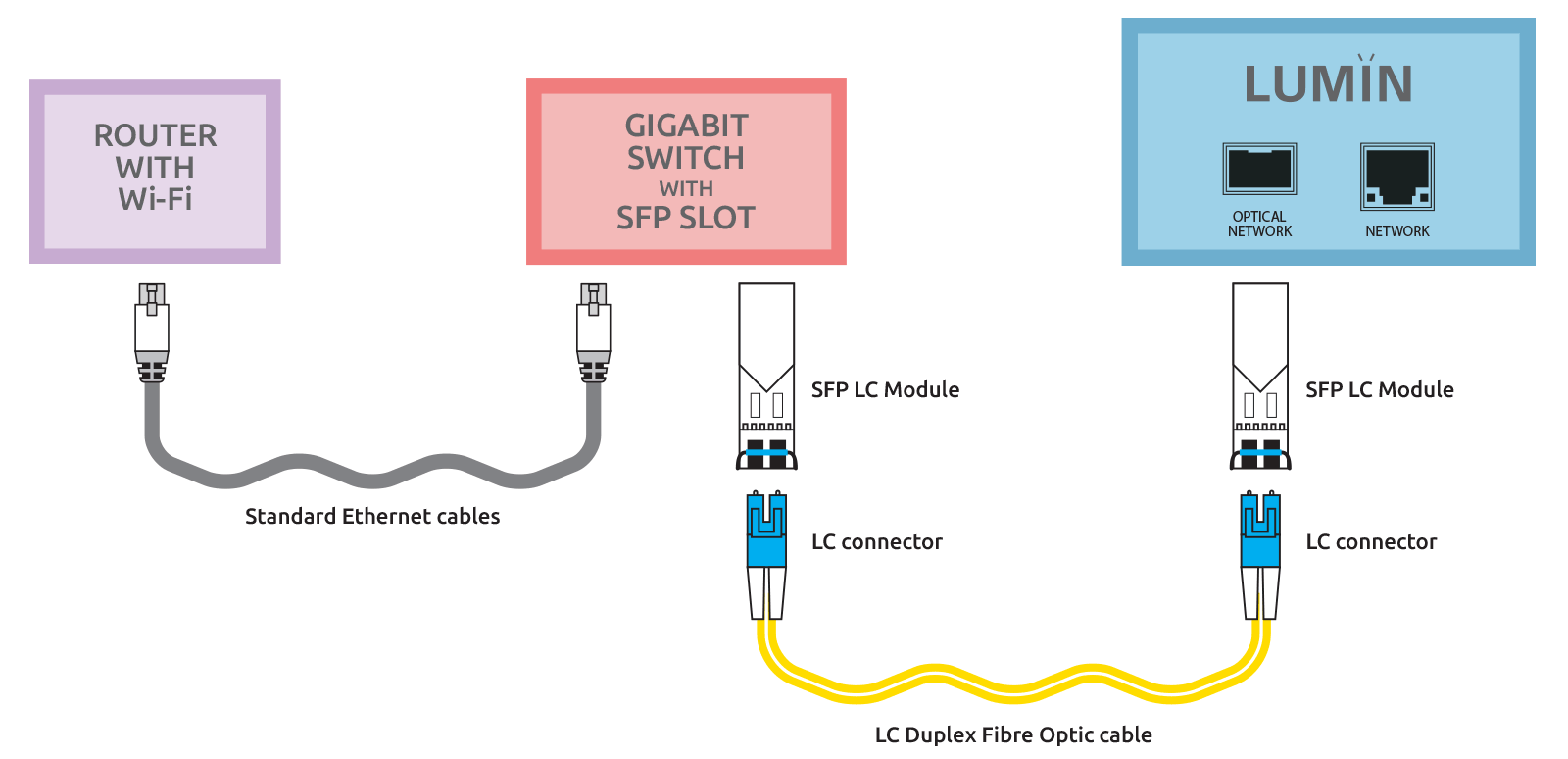LUMIN FAQ
- How much does LUMIN cost?
-
The price of LUMIN products is set by local distributors and varies from country to country according to local taxes. Please contact your local dealer or distributor for price information.
- Can I buy LUMIN directly from you?
-
We can supply directly as long as there is no existing distribution in your home country. Please email info@luminmusic.com for further details.
Note that when purchased directly from our Hong Kong office, you may be liable for import duty or taxes. Please check with your local authorities.
- How long is the LUMIN warranty?
-
There is a 24-month worldwide warranty period on all LUMIN products. If you have a warranty claim, please email info@luminmusic.com
- What's the difference between LUMIN L1 and a NAS?
-
LUMIN L1 music server is designed to be as simple to use as possible. It particularly suits those who are put off by the thought of installing MinimServer on a standard NAS.
Unlike a NAS, you cannot add music over the network. It has to be connected to your computer via USB for this purpose. As soon as you put LUMIN L1 on the network it will act as a music server. No configuration is necessary.
- Which UPnP AV music software is best for LUMIN?
-
LUMIN strongly recommend MinimServer. It supports all the features of LUMIN and much of the development and testing of LUMIN has been performed with MinimServer.
The current release of MinimServer supports Windows x86, Windows x64, Mac OS X, Linux x86 and Linux ARM.
Installation instructions are also available for recommended NAS products from Qnap and Synology: minimserver.com/quickstart.html.
- Which NAS products are best for LUMIN?
-
LUMIN recommend Qnap and Synology, partly because they are good products and partly because there are installation instructions available for installing our preferred music server, MinimServer.
- Do I need to tag my music?
-
Yes, the LUMIN App uses these tags to organise your music.
Historically, server and control software has performed poorly with this method, leading to many people organising their music using folder structure on their servers. LUMIN seeks to improve on that system using tags to improve flexibility and browsing speed.
We recommend that you use appropriate tagging software to correctly tag your music library. A good example is Mp3tag.
- How long does the LUMIN App take to cache my music?
-
The very first time you use it, the LUMIN App will cache all the artwork. This can take a few minutes (approximately 250 albums per minute depending on the resolution for the artwork). After this first time, LUMIN only needs to load any new music that you might add to your library. Usually only a few seconds.
It is possible that a software update may require your library to be re-cached.
- Can LUMIN control my amplifier volume?
-
The LUMIN App cannot directly control your other equipment. However, the internal LUMIN Volume Control uses Leedh Processing and may be as good as using your pre-amp or integrated amp volume control.
- Can the LUMIN App be used with other UPnP AV systems?
-
Yes. LUMIN uses the Linn UPnP AV Extension (now called OpenHome) and it is our intention to provide the LUMIN App for use with other systems that also use this extension. Currently, however, no warranty or guarantee of operation can be provided with systems other than LUMIN.
The LUMIN App will not currently control generic UPnP devices.
- Can other control Apps be used with LUMIN
-
Yes. You will need the LUMIN App (either on phone or tablet) for initial setup, but for playback you can use other UPnP AV (now called OpenHome) apps to control LUMIN. Some examples are Linn Kinsky and Kazoo, and BubbleDS Next.
- Can the LUMIN App browse by sample rate, resolution or file format?
-
Not with UPnP AV (OpenHome) browsing. If this is important to you, a workaround is to organise your music into folders based on these properties and then use Standard UPnP Browsing.
When streaming from TIDAL or Qobuz, information is passed to LUMIN about whether the file is MQA-encoded or High Resolution. This is indicated by small icons next to the titles.
- Can the LUMIN player be controlled by home automation system?
-
Yes, LUMIN network music player supports simple operation control via IP network. Please see the detail in this LUMIN Network Music Player network control protocol file.
- Is there a recommended Fibre Network setup for LUMIN X2 / X1 / P1 / P1 Mini / T3X / U2X / U2?
-
Yes, the standard fiber configuration for Lumin models with an SFP port is shown in this diagram:

Important notes:
Do not connect both fibre and copper Ethernet of LUMIN back to the switch as this creates a loop and will bring down the network. Instead, the copper Ethernet connection can be used to connect a NAS or LUMIN L1.
If a fibre media converter (FMC) is used instead of SFP switch, the connector type required for the fibre may be different, e.g. TP-Link MC210CS has an SC-type connector instead of LC-type.
From our own testing and from dealer and customer feedback we've assembled a list of compatible components:
See the main Fibre Networking page for further details.